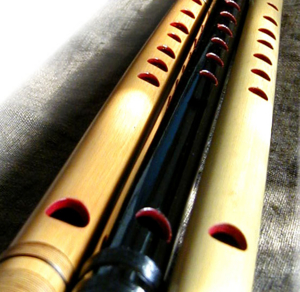Shinobue is the Japanese bamboo-made transverse flute with a high pitch sound.

"Uta" et "Hayashi" Shinobue
Uta shinobue is tuned properly and in pitch. So it can be used to play any kind of music or to play with western instruments.
Hayashi shinobue is not perfectly tuned as is used to play the Ohayashi, the folk festival music.
Tunings
There are 12 kinds of length to choose from. The longest one is called 1-hon choshi, while the shortest is 12-hon choshi. So, the bigger the number is, the shorter the shinobue gets.
◆1-hon choshi/2-hon choshi
It can make the lowest sound as shinobue.The space between the finger holes are too wide so it will be hard to play, so only applied for the special purpose.
◆3-hon choshi/4-hon choshi/5-hon choshi
It can be used to play a lower tone. 3-hon can make G major scale, 5-hon is nearly equale to A major. So it might be easy to play with western instrument.
◆6-hon choshi/7-hon choshi/8-hon choshi
They are the most popular types as they can be easy to play especiall for the beginners. 8-hon sound is close to C major.
6-hon is often applied to play Japanese traditional folklore based on D.
◆9-hon choshi/10 hon choshi/11-hon choshi/12-hon choshi
For their shorter size, eazy to bring with, but too holes are too narrow to cover correctly.The sound is very sharp and hard to make sounds.
When a tone is low or high, player should adjust the pitch by changing the angle of your embouchure. The technique is called "Meri(make a sound lower)" and "Kari(higher)".
Every Shinobue can play 2 and a half octaves. To get the upper octaves, breath from your diaphragm and try to focus on your breath into a tighter stream.
Cover the holes
Cover the holes from the right hand between the 1st and second joints. Adjust from the little finger first, then close other holes accordingly.